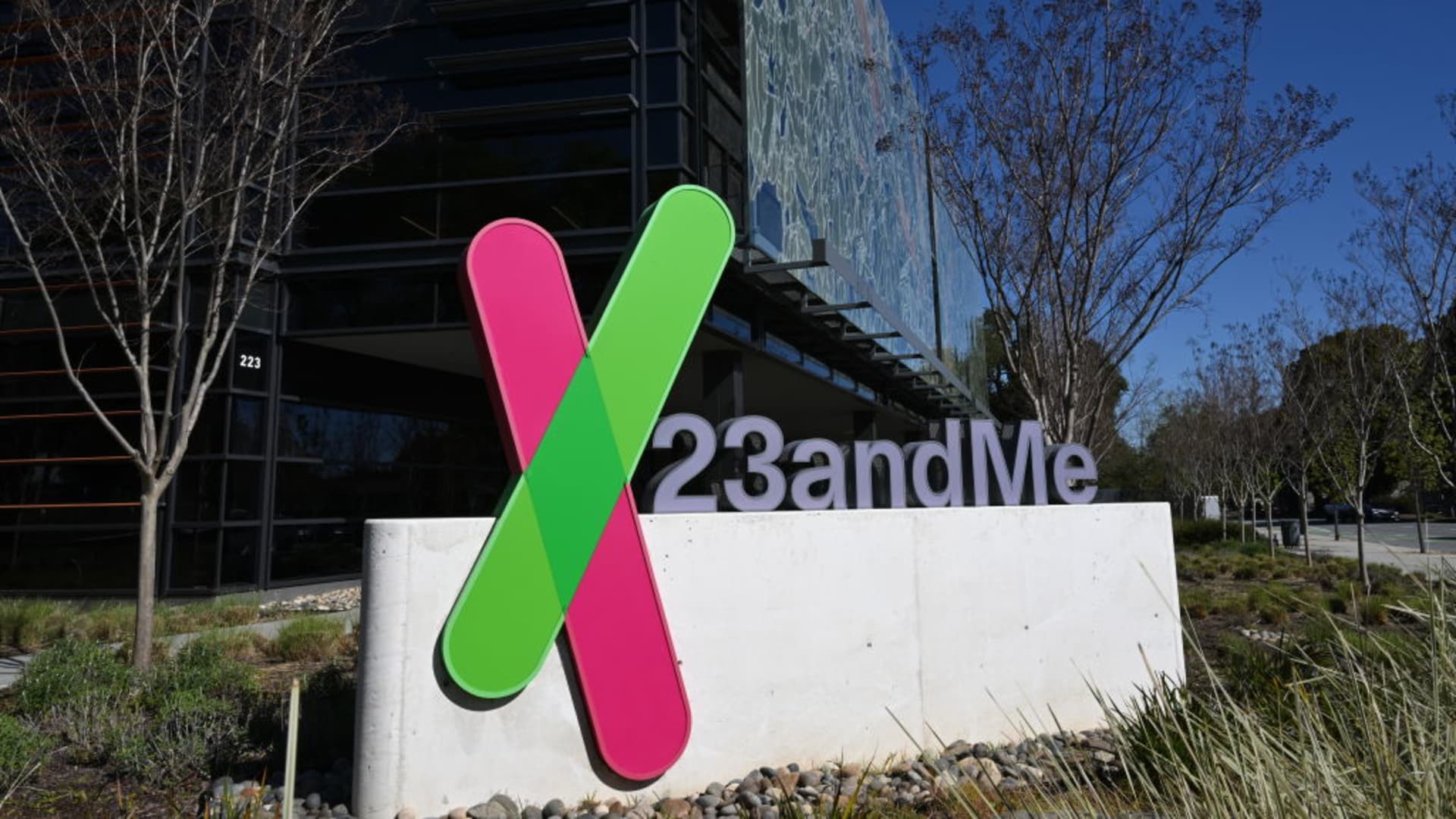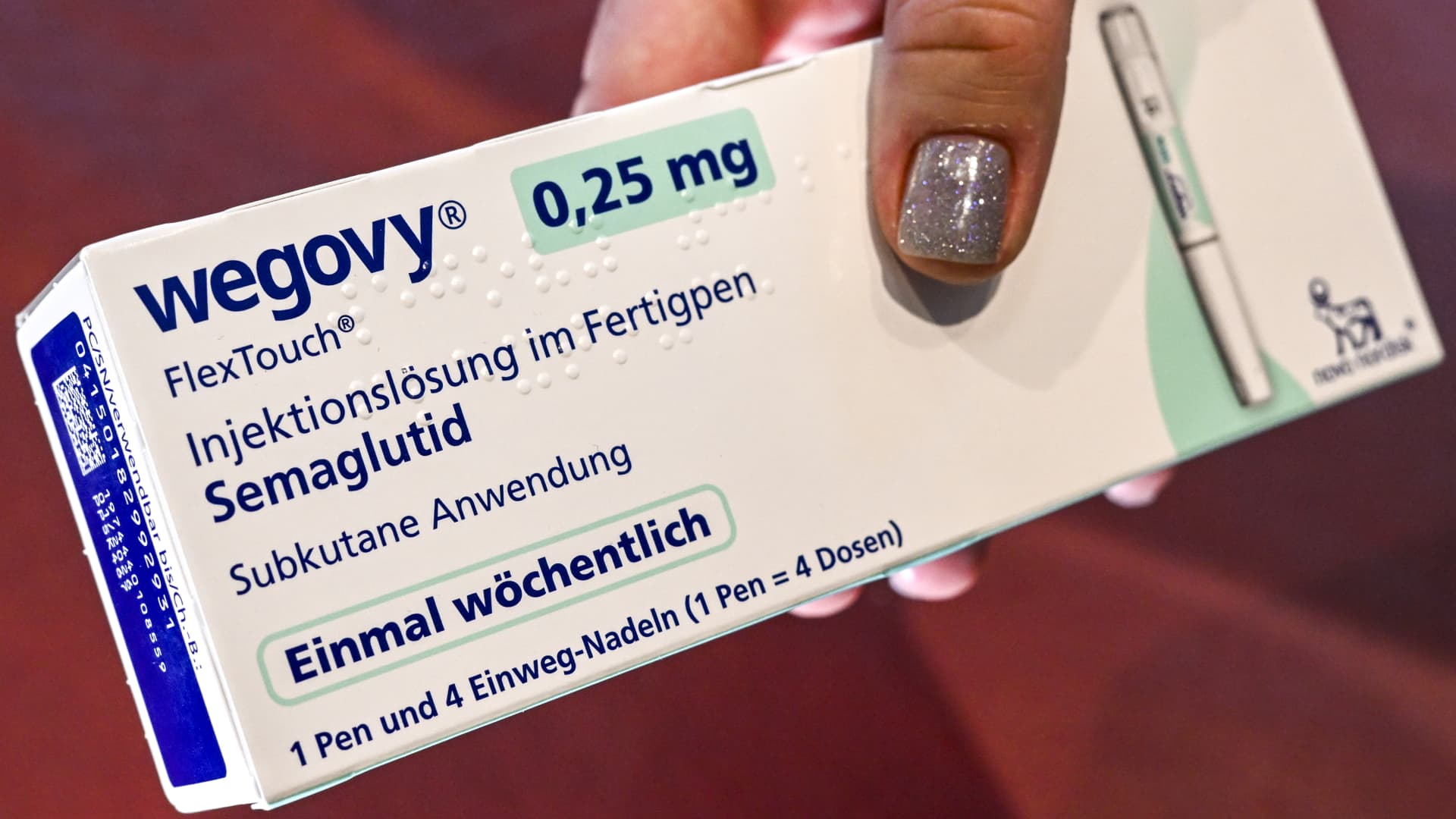Headquarters of Roche, a multinational pharmaceutical industry on December 27, 2021 in Madrid, Spain.
Cristina Arias | Cover | Getty Images
A version of this article first appeared in CNBC's Healthy Returns newsletter, which brings the latest health care news straight to your inbox. Subscribe here to receive future editions.
Good afternoon! Roche is one of several drugmakers hoping to join the booming market for weight-loss drugs, which New Nordisk and Eli Lilly are currently dominating.
But will the Swiss company be able to develop drugs that can compete with this duopoly?
The answer is still unclear.
We need to see more data from larger, longer clinical trials, which will likely take Roche years to conduct.
But last week the company presented more initial data on its experimental obesity injection and pill, raising concerns among some analysts about how competitive those products might be if they enter the space.
Some analysts said the new results showed that both drugs, which Roche acquired through its nearly $3 billion acquisition of Carmot Therapeutics in December, caused a higher rate of side effects than expected.
“In our view, investor enthusiasm for Roche's obesity franchise may now pause, given the two acquisitions [drugs] showed better results than expected [gastroinsteinal] “side effects,” Jefferies analysts said in a note Wednesday, noting that the trials aggressively increased doses of the drug to patients.
For example, Roche on Wednesday released safety data from a phase one trial of its oral drug, CT-996, which is being developed to treat obesity and diabetes. The drugmaker had previously said the once-daily obesity pill helped patients lose up to 7.3% of their weight in four weeks, compared with 1.2% among those given a placebo.
According to Jefferies analysts, that “competitive” weight loss appears to be driven by “rapid” dose increases, which led to a high frequency of gastrointestinal side effects. But they noted that those side effects could be mitigated with a more gradual increase in dose.
“The true competitive profile [of the drug is] “This will not be apparent until the presentation of data” from larger phase two trials, the analysts wrote.
JPMorgan analysts were less optimistic in a note Wednesday: “We are concerned about the ability to gradually reduce the high rates” of gastrointestinal side effects, they wrote.
Analysts said a group of patients who ultimately received the lowest maximum dose of the pill (90 milligrams) still experienced high rates of nausea “with limited efficacy in weight loss.”
Another group of patients taking the highest maximum dose of the drug (120 milligrams) with slightly smaller dose increases over time had rates of nausea of 83%, vomiting of 33% and diarrhea of 50%, according to the JPMorgan analysts. The drug's tolerability with that dosing approach “appears uncompetitive,” they said.
Analysts said those rates are significantly higher than those seen with Novo Nordisk's oral semaglutide, the active ingredient in the weight-loss drug Wegovy, and Eli Lilly's experimental obesity pill, orforglipron.
But the “primary goal” of the pill study was to “fail fast” and determine whether there were any unexpected safety or efficacy issues, Manu Chakravarthy, Roche's head of product development for cardiovascular, renal and metabolic diseases, said on CNBC's “Fast Money” show Thursday.
That's why the company was “a little bit quicker on the titration scheme than it normally does” in later-stage trials, he noted.
He added that the rates of gastrointestinal side effects are “very much in line” with other drugs in the same class as Roche's pill, which mimics a hormone in the gut called GLP-1 to suppress appetite and regulate blood sugar.
“We didn't see anything unexpected in terms of safety, which really gives us a lot of confidence to move the program forward into phase two,” Chakravarthy said, noting that Roche plans to begin mid-stage studies in 2025.
He added that Roche does not believe that slowing the titration rate would make the company's injection or pill any less effective. That's because both products showed similar weight loss trajectories, even with slower or lower dose increases, according to Chakravarthy.
“If anything, when we slow down the titling, we would expect accountability to improve even further,” Chakravarthy told CNBC.
In May, Roche said its injection, CT-388, helped obese patients lose 18.8% Patients lost more weight than those given placebo after 24 weeks in the first phase of the trials. The company expects the drug to eventually demonstrate 25% weight loss in the later stages of the trials, Chakravarthy told Fierce Biotech on Wednesday.
Feel free to send tips, advice, story ideas and information to Annika at [email protected].
The latest in health technology: Oura enters the metabolic health market with the acquisition of Veri
Smart ring maker Oura is going beyond sleep, exercise and stress tracking and entering a whole new market: metabolic health.
Oura announced last week that it had agreed to acquire Veri, a company that uses continuous glucose monitors to help users eat healthier and lose weight. Oura did not disclose terms of the deal.
A continuous glucose monitor, or CGM, is a small sensor that is inserted into the skin to monitor the user's real-time glucose levels. Glucose is a sugar that we get from food and is the body's main source of energy. Each person's glucose levels fluctuate, but consistently high levels can lead to more serious health problems, such as metabolic disease, insulin resistance, and heart disease.
Historically, CGMs have been prescribed to patients with diabetes, but Abbott and Dexcom have recently launched over-the-counter versions that are available to any adult who doesn’t take insulin. Both companies offer the sensors for less than $100 a month.
Oura is the latest company looking to position itself in this emerging market.
The company’s smart ring can already help users monitor their sleep, heart health, exercise and stress, so expanding its reach to metabolic health was a natural next step, Oura CEO Tom Hale wrote in a blog post. About 97% of Oura members have said they want to understand how their body responds to food, Hale added.
The company had already agreed to integrate its data into Veri through a partnership last year. As part of the deal, a “significant portion” of Veri’s employees, including its founders, will join Oura. Existing Veri customers will be able to use its platform until the end of the year.
Oura's acquisition of Veri is just the beginning of the company's plans in the metabolic health market, Hale said.
“Our ambition is to create an ecosystem of other inputs, such as CGMs, that feed into the Oura experience to make it even more personalized and convenient,” he said.
As a first step, Oura will introduce a new feature called “Meals” through Oura Labs in the fall, according to a statement. Oura Labs is where users can test new features and provide feedback before they are more broadly released. The Meals feature will allow users to track what they eat to gain insights into how it affects their sleep, recovery and stress.
Feel free to send tips, advice, story ideas and information to Ashley at [email protected].












